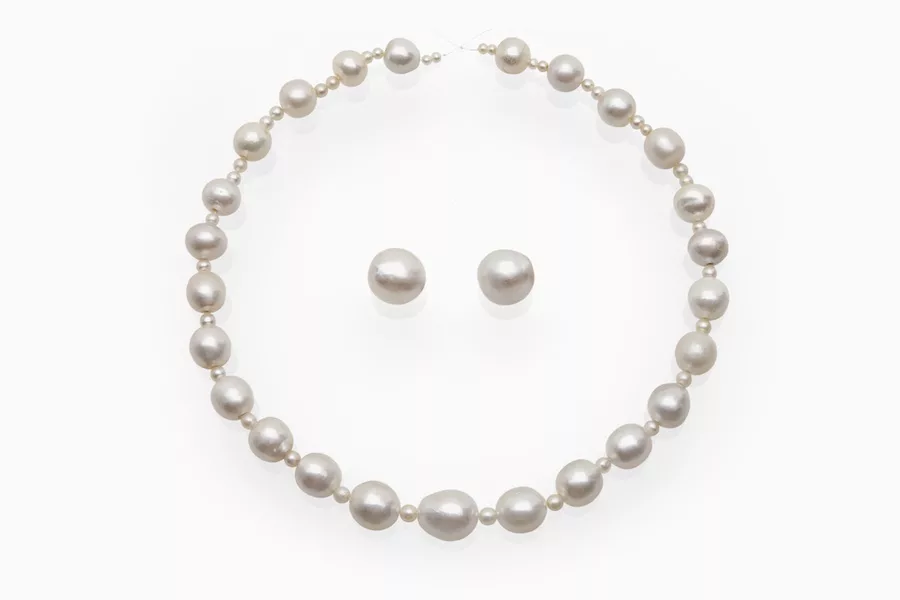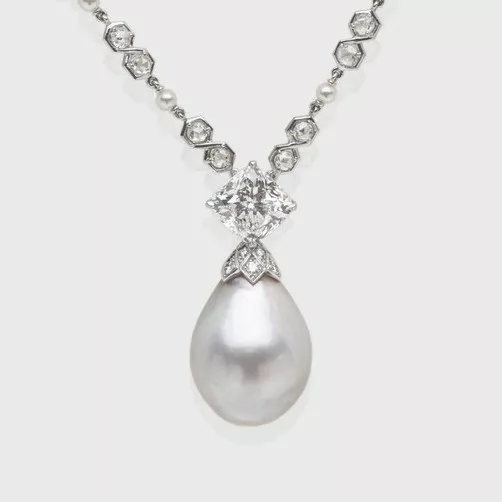DNA Fingerprinting and age dating of historic natural pearls: a combined approach
Keywords: Natural pearls, cultured pearls, DNA fingerprinting, 14C age dating
Abstract
Natural pearls are accidental formations in wild oysters. The lack of new supply in recent decades has meant that the trade is heavily dependent on old stocks of natural pearls, and that natural pearls of high quality can be considered rare. Auction results of natural pearls over the past two decades are a testament to this. As one of the world’s oldest and most widely collected gems, pearls merit greater study. Research into species determination and radiocarbon age dating pearls is contributing to greater knowledge about the provenance of historic natural pearls. This paper presents some case studies of such recently tested samples and provides an outlook on combining age dating, DNA fingerprinting and more traditional methods for pearl analysis.
Introduction
DNA fingerprinting of pearls was first developed and published in 2013 using different types of pearls and oyster species (Meyer et al., 2013), and a more recent study of a similar methodological approach was published by Saruwatari et al. (2018). Since these publications, a wide-reaching global reference dataset of the most common natural and cultured pearl oyster species has been constituted by the University of Zürich and the Swiss Gemmological Institute SSEF. We will present this dataset, and demonstrate the approach used to assemble such a large collection and the limitations involved. Further, we present how radiocarbon age dating is used on real-world cases of pearls in a gemmological context (Krzemnicki and Hajdas, 2013, Krzemnicki et al., 2017).
Case Study 1: The Queen Mary Pearl
The Queen Mary Pearl was originally owned by Queen Mary (1867-1953), the wife of King George V of England (1865- 1936). This significant pearl was subsequently passed down through generations within the royal family until it was eventually sold several years ago. It was recently resubmitted to our lab for testing (Figure 1), this was an opportunity to carry out additional DNA fingerprinting and age dating analysis. The findings of radiocarbon dating conducted at ETHZ have revealed an estimated historical age for the analysed pearl: the pearl is likely to have formed between 1707 and 1876 A.D. in coastal waters along the Pacific coast of Mesoamerica. Furthermore, the DNA analysis conducted has definitively identified the Queen Mary Pearl as belonging to the Pinctada mazatlanica species, commonly known as the Panama pearl oyster or La Paz pearl oyster. This particular species is found in the Pacific waters of Mesoamerica, ranging from Baja California (Mexico) to Ecuador and northern Peru.

Case study 2: Discovery of a new species for the pearl trade (Pinctada persica)
A natural pearl set containing 63 natural pearls was studied extensively (Figure 2). Sixty of the natural pearls were of saltwater origin, three were of freshwater origin. Three saltwater natural pearls were randomly selected and further age dating and DNA fingerprinting analysis was carried out. One of the pearls was conclusively identified as being from the Pinctada radiata species (Persian Gulf & Ceylon pearl oyster), a species that can produce pearls commonly called ‘Basra pearls’ in the trade. The other two sampled pearls were attributed to another species: Pinctada persica or Pinctada margaritifera persica, which is a rare member of the Pinctada margaritifera species complex. To our best understanding, this is the first report of pearls originating from Pinctada persica. Until now, this species has been exclusively documented in the Persian Gulf (Ranjbar et al., 2016). Based on our data, they probably formed between the 16th and 18th century A.D. with the highest probability of formation having been in the 17th century (Figure 3). Mixing of pearls (different species, saltwater and freshwater) is not rare in historic natural pearl jewellery, as pearls were often collected and mixed together unknowingly.


Outlook
This presentation will focus on these two case studies along with further recent case studies that highlight how a combined approach of age dating and DNA fingerprinting can be used in further documenting historical natural pearls. The ongoing research is also an opportunity to better understand pearl oyster genetics, as has been shown through the discovery of a previously unreported oyster species that has produced natural pearls for the trade.
References:
- Krzemnicki M. S., Hajdas I., 2013. Age Determination of Pearls: A New Approach for Pearl Testing and Identification, Radiocarbon, 55(2-3), 1801–1809.
- Krzemnicki M.S., Cartier L.E. and Hajdas, I., 2017. Radiocarbon age dating of 1,000-year-old pearls from the Cirebon shipwreck (Java, Indonesia). Journal of Gemmology, 35(8), pp.728-736.
- Meyer J.B., Cartier L.E., Pinto-Figueroa E.A., Krzemnicki M.S., Hänni H.A. and McDonald B.A., 2013. DNA fingerprinting of pearls to determine their origins. PLoS ONE, 8(10), article e75606, 11 pp., http://dx.doi.org/10.1371/journal.pone.0075606.
- Saruwatari K., Suzuki M., Zhou C., Kessrapong P. and Sturman N., 2018. DNA techniques applied to the identification of Pinctada fucata pearls from Uwajima, Ehime Prefecture, Japan. Gems & Gemology, 54(1), 40–50.




